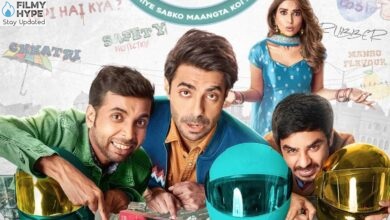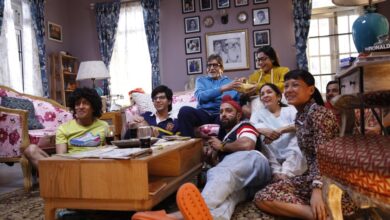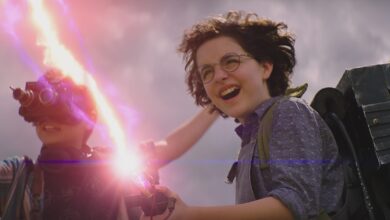Dune – Part Two Review: Denis Villeneuve Makes the History Among the Best Science Fiction Films Ever Made
Cast: Timothée Chalamet, Zendaya, Rebecca Ferguson, Javier Bardem, Austin Butler, Stellan Skarsgård, Christopher Walken, Florence Pugh, Josh Brolin
Director: Denis Villeneuve
Where To Watch: In Theaters
Filmyhype.com Ratings: 4.5/5 (four and a half stars)
You come away disoriented from watching Dune – Part Two. I was stunned by the amount of information that the sequel signed by Denis Villeneuve, after a dense but more contained first chapter, pours out in almost three hours of duration. But you also feel overwhelmed by a unique, powerful, important cinematic experience. Because Dune – Part Two is the quintessential blockbuster that doesn’t want to be a blockbuster. And it is an internal conflict that the film carries within itself throughout, without ever rejecting it and indeed, embracing him. And the result is a simply stratospheric work: authorial, gigantic, which remains – or rather, will remain – crystallized over time. If you want to do a refresher, here is the summary of Dune Part 1. Several strengths have continued to make Frank Herbert‘s novel series so attractive for a film adaptation, despite the passage of time and the succession of events that have changed recent history from time to time.
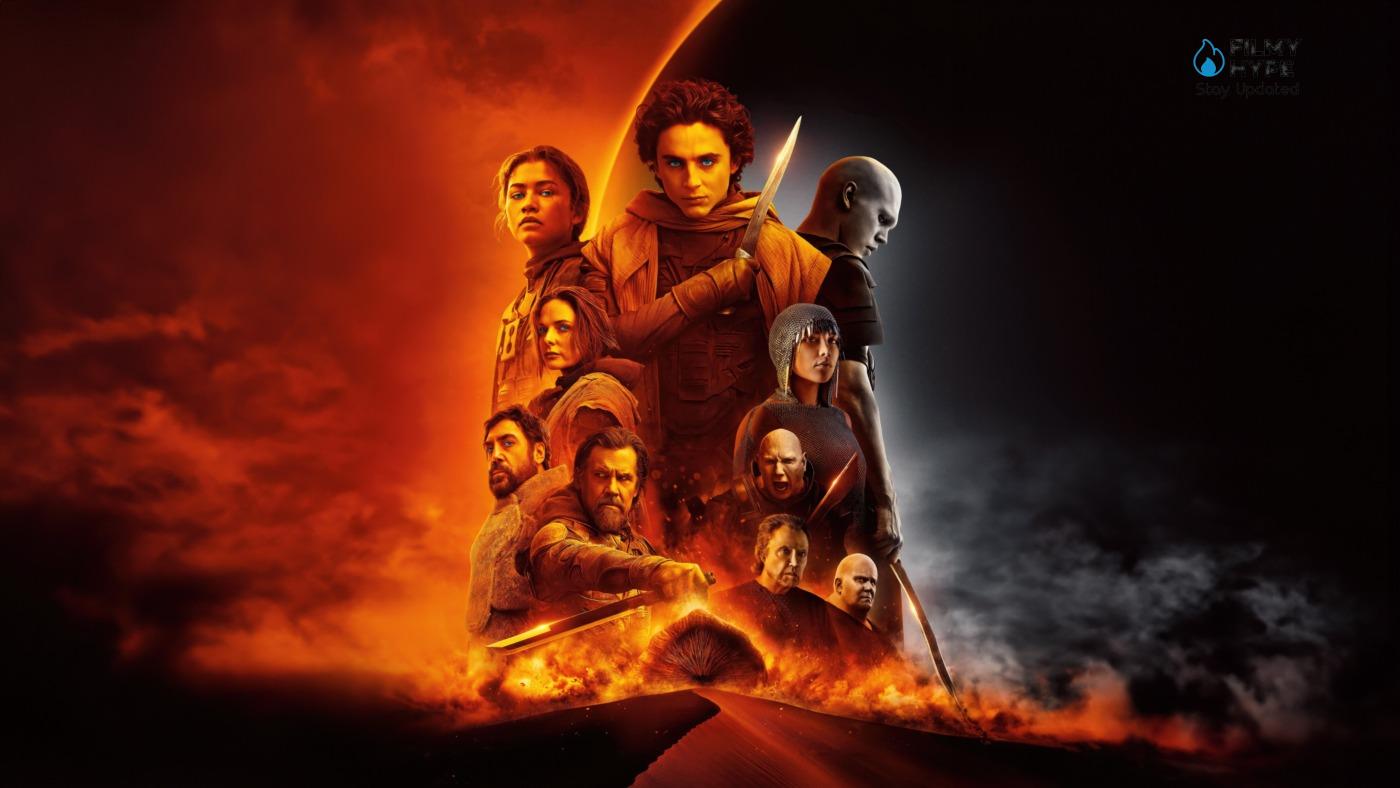
It is not because we are boring and, in the end, we always remain stuck at the starting point regardless of the digital revolutions (that is, yes, perhaps it is also a bit of this), but above all because of his ability to deal with the issues addressed with a modern slant, even if building their narrative logic around classical nuclei. There is Shakespeare, but there is also a critical deconstruction of everlasting symbols linked to the male vision of Western and non-Western thought. There is, therefore, an abundance of already known information in the first part: another scene of tears collected so as not to waste any liquid in the desert; again, the sandworms and the myth that follows them, which were previously told from the perspective of the Atreides, now it is the Fremen who do it. Paul Atreides’ narrative arc also starts all over again. In the 2021 chapter, he was a prince who became Muad’dib (the Fremen messiah). Now he is a Muad’dib whose dual nature collides with the destiny of Kwisatz Haderach (the powerful being who retains the genetic memory of all his ancestors).
Dune – Part Two, however, finds the true heart of the novel, its political soul, and gets it right. After the Harkonnen conquest of the spice production centers, a silent rebellion arises in the desert. There are mainly three fronts: the Baron tries to make what was usurped from the Atreides work while his nephew Rabban proves unsuitable for the role assigned to him. His weakness is the right opportunity for Feyd-Rautha, his brother, to step forward and take power. Elsewhere in the universe, Emperor Shaddam IV continues to act in the shadows. His silence on the overthrown house makes noise, his plots begin to come to light. Finally, in the desert the Fremen rebels are organizing themselves: they are few, but they have the dunes, sandstorms, and a profound knowledge of the territory on their side. The strongest weapon, however, is a legend that is about to be born right among those grains of sand.
Dune – Part Two Review: The Story Plot
The story picks up where we left off: Paul Atreides (Timothée Chalamet), together with his mother (Rebecca Ferguson) are on the run and have joined the indigenous people of Arrakis, the Fremen. The objective is the reconquest of the territories stolen, in a bloody way, by the Harkonnen. A vengeful plan that will bring to light inconvenient government truths, especially because it will come to light when it was the emperor (Christopher Walken) himself who plotted against the Atreides family. The extraordinary element of this sequel lies in its extreme coherence – narrative, stylistic, and tone – with the first chapter. An almost reverential continuity, in the name of an imposing solemnity and a rhythm that remains rightly staid for a large part of the story.
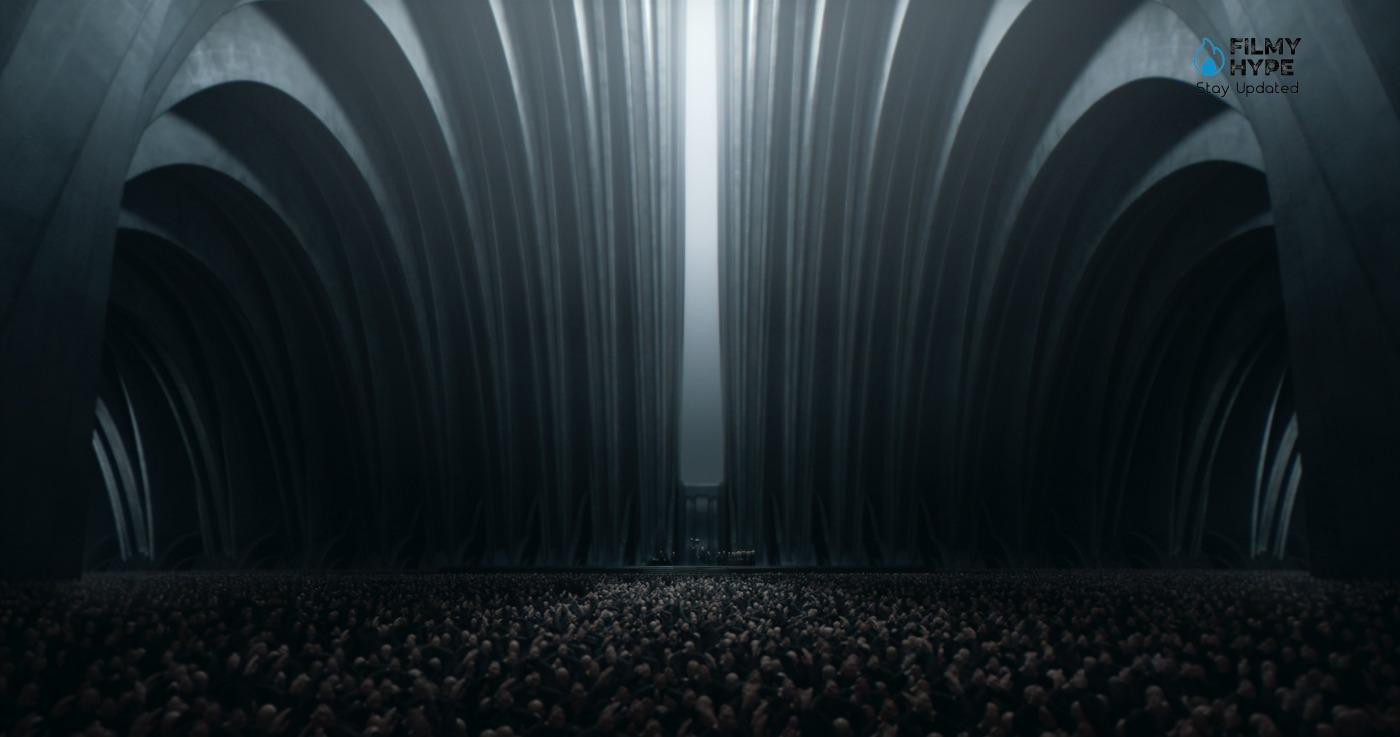
Paul Atreides (Chalamet) and Lady Jessica (Ferguson) managed to escape the trap plotted by Emperor Shaddam IV (Walken) and Baron Vlad Harkonnen (Skarsgard) and joined the Fremen, the people of the desert of Arrakis, the ones who fill the dreams of Duke Leto’s heir and who is awaiting the arrival of a Messiah who will come to guide them. Messiah coincidentally corresponds perfectly to the profile of Paul, whose arrival divides the indigenous population between those who firmly believe in his ascension, such as the leader of the northern tribes, Stilgard (Bardem), and those who see in him as just another foreigner who has arrived to dominate them, like Chani (Zendaya). Despite this division, Paul fits in among the Fremen, successfully participating in the military campaign against the Harkonnen and starting a love story with the girl who has always occupied his mind and her heart.
Behind her, her mother works instead, pregnant with a little girl who is already able to speak to her and her brother, to prepare the ground for what he is destined to become. The desert of Dune – Part II is constantly changing, it is welcoming, hostile, cold, hot, romantic, and horrifying. The thousand ways in which Villeneuve portrays it make it an evolving terrain depending on the needs and moments of a film that risked seeing its palette flattened and which instead proves to be extraordinarily spectacular, surprising, studied, and complex. The desert, as well as its fauna and flora, is the reflection of the Fremen, a people full of history and enormous dignity, made up of all the races of our reality who have had to suffer unbridled colonialism from the “tribes” of the so-called First World. Naive, but proud, loyal, but ferocious. A desert people who have water as their sacred element, a way to keep connected, always.
Villeneuve is in love with the Fremen as Paul is in love with Chani, the perfect representative of the spirit of his people, who does not want masters, who do not accept the Great Houses, and who the only reality he knows is one where men and women are equal. Unlike Villeneuve, however, Paul is also the man of prophecy, who has arrived to wage the Holy War and avenge his father, which is why he will have to choose whether to be Muad’dib or the Kwisatz Haderach. Not that this Dune – Part Two doesn’t improve compared to its predecessor, especially in the last act. The second chapter is, on balance, a much more action-oriented product, which however maintains the same compromises as the first Dune in terms of approach to storytelling. A necessary direction, both to prepare the ground for the finale and to maintain that strongly sacred aura that Villeneuve embraces with pride and unique ideas.
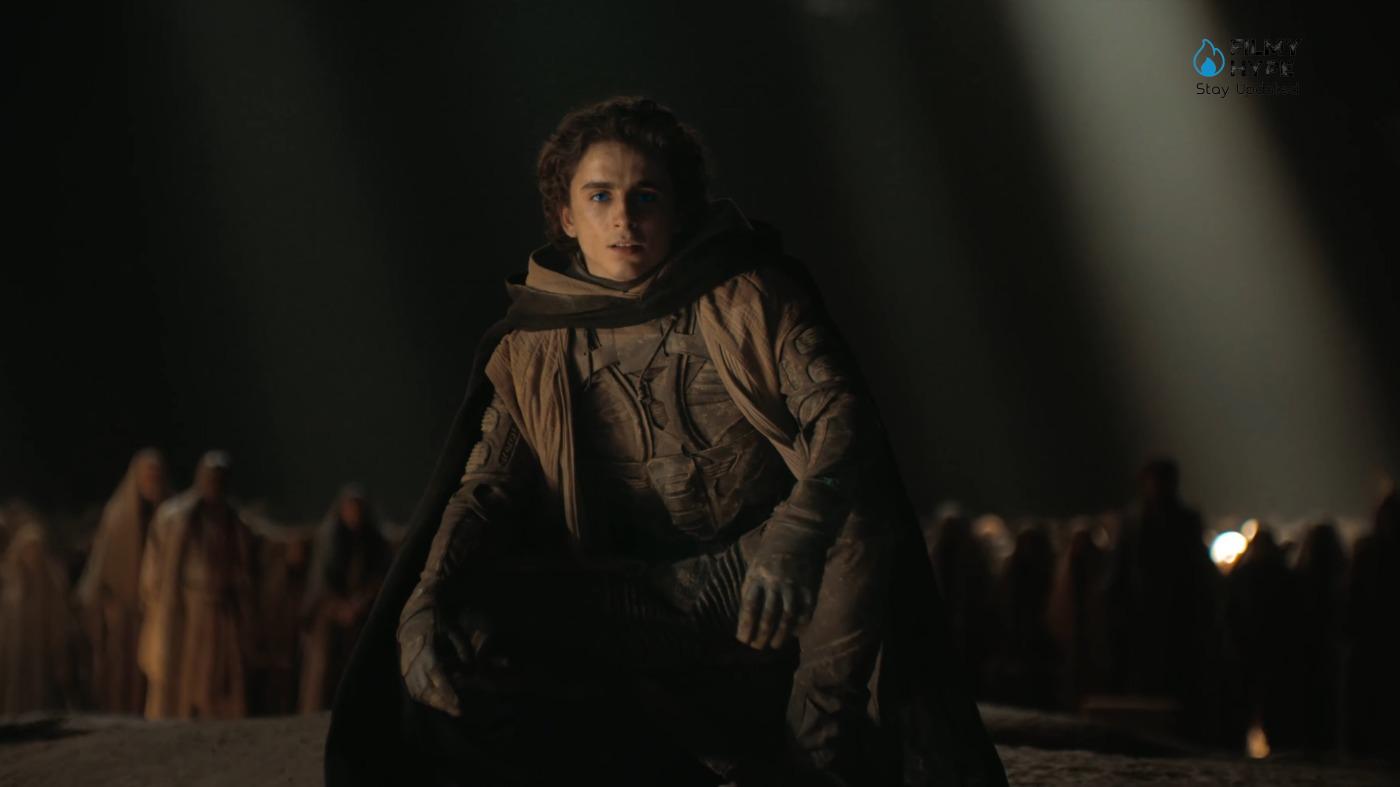
With an absolute philology also towards Frank Herbert’s novel, compared to the film starring Timothée Chalamet must appropriately make sacrifices that do not in any way distort the quality and cohesion of the plot. Dune – Part Two is a film that proudly mirrors the first. Above all in taking up ideas and situations anticipated in the past to the point of giving them a fully complete, symbolic meaning. A circle that closes so coherently that it seems to have truly been shot back-to-back. This confirms how Part 1 was nothing more than a very long prologue, a necessary act to outline the worldbuilding, a preparation ground waiting for its author to pour genius, style, and soul into the long and painful transformation of Paul Atreides into Muad’dib, shaped by a perfect and at times astonishing Chalamet.
Dune – Part Two Review and Analysis
Dune – Part Two is also unique because it features an obsolete science fiction epic, even going against the grain of the canons of commercial cinema. It takes all the time necessary to build the rise-descent of its protagonist, it is as exasperating as it is bewitching in its religious tone. It demolishes fragments and then brings together the multiple subplots. It does so by undoubtedly sacrificing something: it doesn’t give much space to the supporting actors, it leaves only a few crumbs to the many (and hyper-prestigious) extras, but it outlines a cast of characters of absolute value and immense depth. Among these, once again, the weight of the female figures stands out, led by a divine and ethereal Rebecca Ferguson, who has risen to deus ex machina and is perfectly functional in the biblical and mythological conception of the story and the characters.
Perhaps more time was needed for the antagonists, somewhat sacrificed by an ending that stages a conflict that doesn’t have the breadth of the great colossal battles. Indeed, by the standards of the genre, it might even be hasty. But everything is in the right place because it remains concrete. Faithful, indeed, to his anti-heroic spirit and the final message of the work, still so tremendously current and realistic. This Dune is a work whose parts complement each other perfectly thanks to the majestic visionary power of Denis Villeneuve (it is no coincidence that there are several science fiction works among Denis Villeneuve’s favorite films). Even more than its predecessor, Part 2 shows off an all-encompassing visual framework of a mystical and overwhelming force. To be watched rigorously on the largest possible screen so that the gigantism of its staging truly leaves you breathless.
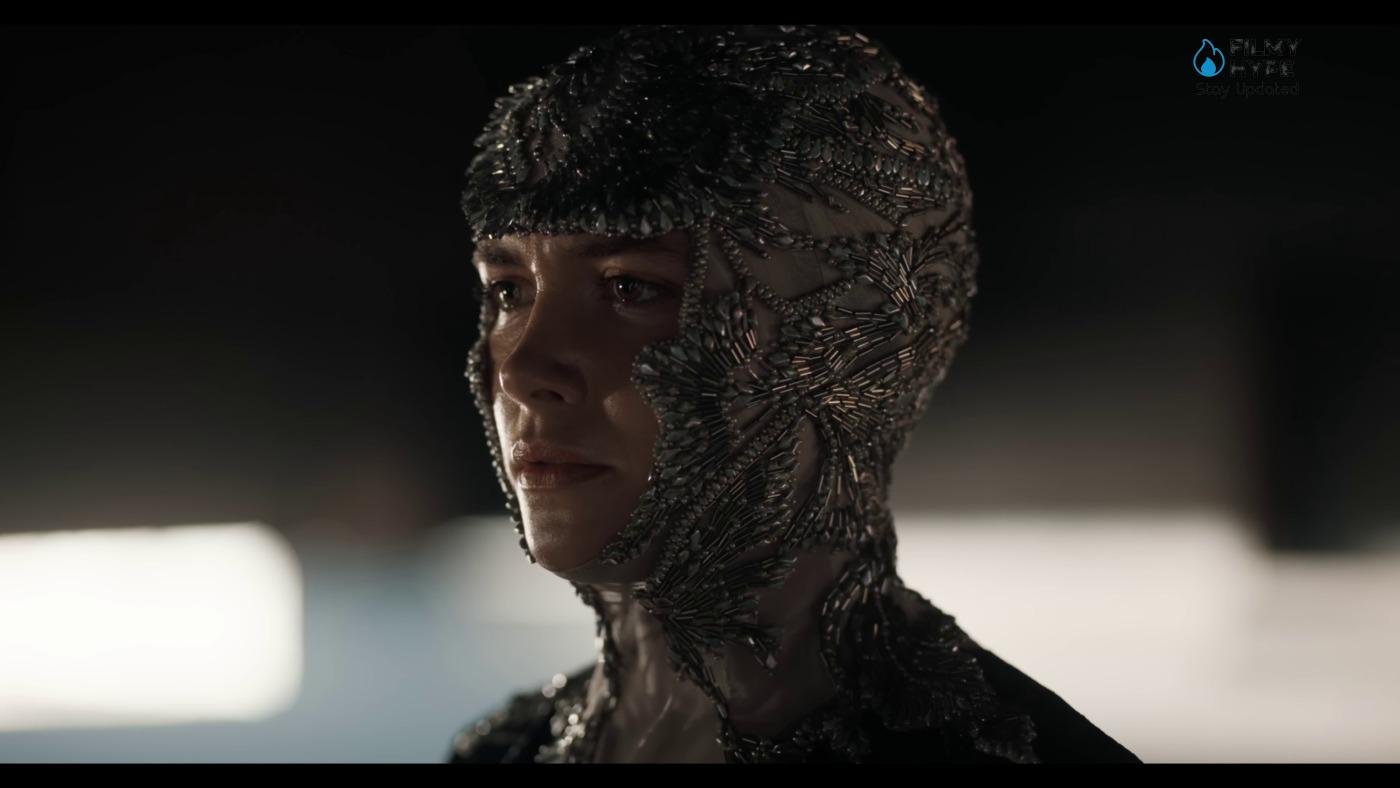
For Villeneuve’s cinematic language to strike with its typical authorial attitude, the expression of an anti-epic that screams silence: it is when everything stops when the boundless sandy horizons of Arrakis stand out against the immensity of the cosmos, that the calm of Dune becomes truly deafening. So much so that you can feel that sand penetrating your bones, branding your skin. And it stays with you, it stays inside you. It’s what Dune leaves you with, it’s what Dune gives to the cinema. Even the obsessive attention to costumes is aimed at expressing a meaning. There is no need to describe the desert, just show the troops landing softly on the sand so as not to awaken the worms or the armor cooled by a fan and with the design in the shape of insects; one dress is enough to tell the story of a planet. It’s a shame, then, when the explanation comes in words. The many visions do not have the interrogative value of the first film.
There we wondered whether or not to believe in the prophecies; here the reflection goes elsewhere: should leaders be trusted? Spice hallucinations are less inspired and redundant. The prophecies of the first film begin to dissolve in the second, with all the limitations of not having shot the films back-to-back (some scenes are shot very differently). If the political strategy is excellent, the military strategy lacks some care. Trained troops slip into hostile territory without having thought about countermeasures in case something goes wrong. It’s very, very easy for rebels to fight their way through armies full of technology. In particular, there is an important battle in the third act that is well shot, but hasty: the direction quickly moves inside a building where the most important fight takes place. However, the desire to see how the (sensational) things that happened outside are evolving remains. There the director glides, forgetting about it.
Small uncertainties that would not be noticed in another film, but which emerge here and are displeasing precisely because of the incredible power of the audiovisual experience it offers. Hans Zimmer’s soundtrack is less original here, but also less intrusive and more relevant to the story. The direction works on sounds and shapes, reaching in some sequences almost a visual abstraction of the action. Geometric shapes are the masters in the composition of the shots. The editing cuts are based on very strong contrasts between darkness and light, between straight and curved lines, as in a splendid moment in which a spherical spaceship descends to the earth and the following shot shows the hard geometries of the buildings which create frames inside the image. Even the lights in the caves create rectangular shapes that give depth to the composition, such as a large battle scene entirely devoid of color (not simply black and white) with fireworks in negative. Cinema creativity is at its best.
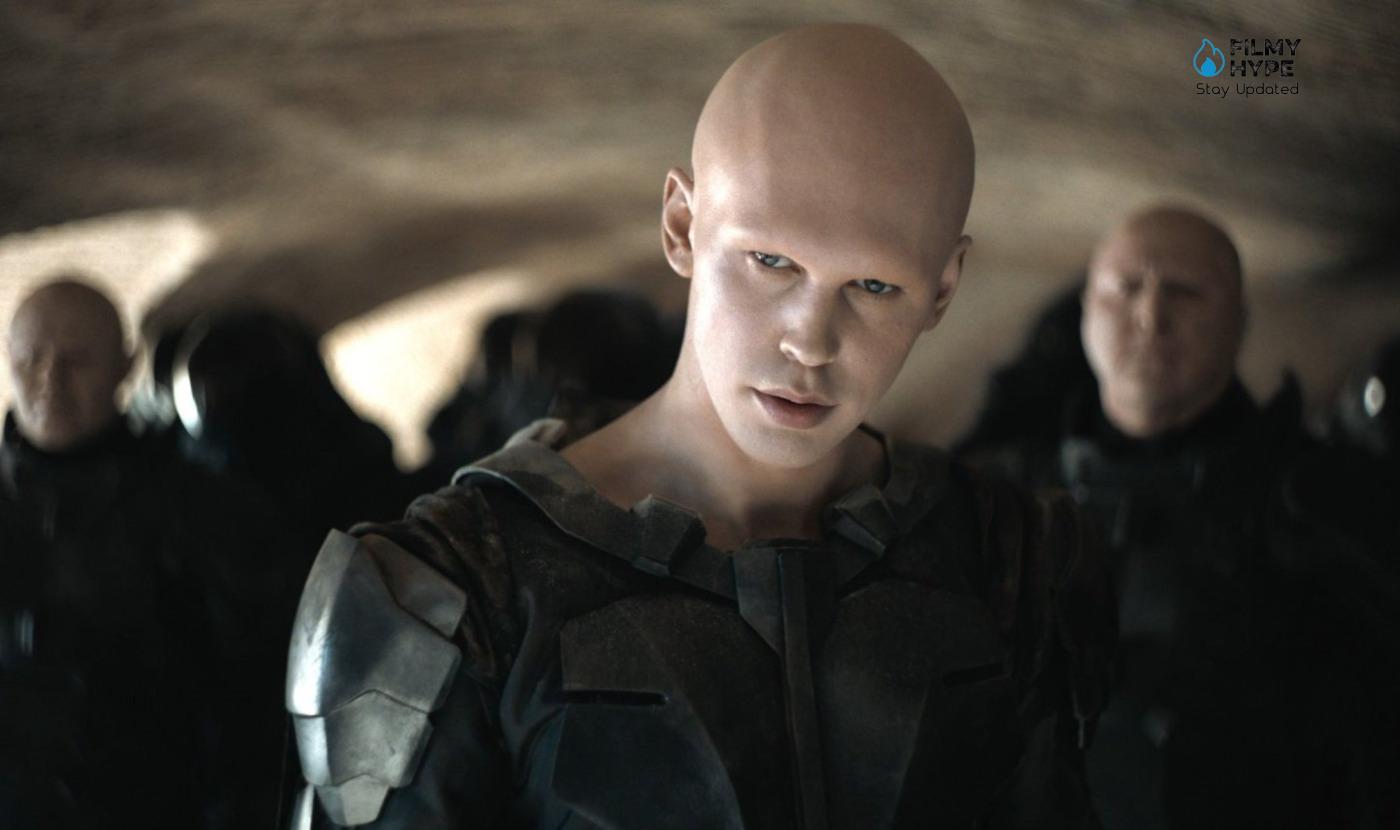
So similar and so different, both films suffer from a somewhat unbalanced narrative structure and a frustrating sense of incompleteness. Once this obstacle was overcome, however, Denis Villeneuve’s project to bring his gaze to a story with a large audience can be said to be completely successful. Both films stand out, equally, among the best that science fiction has to offer. A note of merit goes to Austin Butler (Elvis), a true talent, perfect in interpreting Feyd-Rautha Harkonnen as one of the most disturbing villains since Heath Ledger’s Joker. Less convincing is Timothée Chalamet, who is unable to hide behind the character: his sudden transformation remains very much in the script, less in the emotions felt while watching it. Better than Blade Runner 2049 in making the complex events it tells exciting, Dune – Part Two shares the visual majesty with the director’s previous films. Of course, we are far from the perfection of Arrival, together with The Woman Who Sings, the film by a director who has the depth of a timeless film.
Dune – Part Two, however, is, paradoxically, an oasis in the desert. This second chapter reconfirms how, to date, this is the most fascinating franchise that Hollywood is proposing: the one done better, with more ideas and ambitions. A beautiful journey to Arrakis and the planets that compete for it. A film that brings the cinematic machine to its maximum. It remains to be seen if, but above all, when, the now necessary third final chapter will arrive. The hope is that the entire production can move faster (perhaps already having, as we believe, a plan in case of the success of this film) to close the story of Paul “Muad’dib” Atreides with as much continuity as possible.
Therefore, the themes that we had the opportunity to explore and savor in the first part of this immense work return: religious fanaticism, politics, revenge, and bloodlines. Elements that manage to mix perfectly with the science fiction tone but, at the same time, appear very current and modern. The entire world-building, despite having its origins in the novels written by Frank Herbert in 1965, manages to create a mix between reality and fantasy, giving the viewer a clear overall vision. Once again, customs play a fundamental role as they manage to convey complicated and complex concepts such as the habits and customs of entire populations.
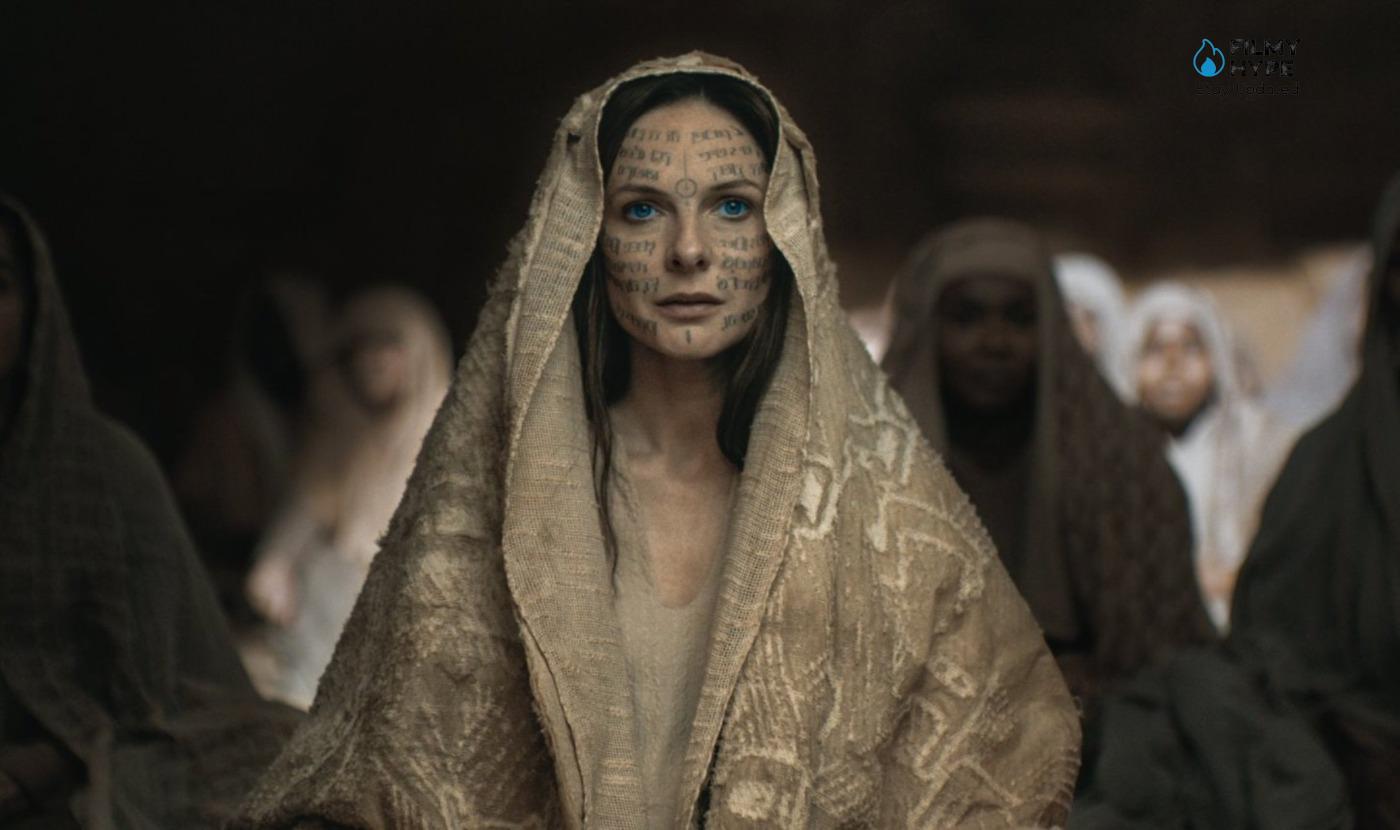
These concepts are visually conveyed by the saturation of the film. The photography, like Hans Zimmer‘s musical composition, is a pleasure for the senses. The moments in which everything is tinged with black and white tones, in stark contrast with the heat of the sand and the freedom breathed among the spice dunes, allow a great connection with the intrinsic cruelty in the soul of the Harkonnen. It’s almost as if the care taken with every single shot can speak directly to the audience preparing to watch it in the theatre. Because yes, this is a film that should be seen on a cinema screen while your seat shakes from the sound effects. The complexity already described in the first Dune book is perfectly returned to the public through a visual spectacle that is decidedly unique for its genre.
The attention given to detail is palpable in the directorial choices, as much as in the interpretation of the entire cast. The already known faces have been joined by: Florence Pough, in the role of Princess Irulan Corrino; Christopher Walken as Emperor Shaddam IV; Léa Seydoux is Margot Fenring; and Austin Butler shocked everyone with the sociopathy of his Feyd-Rautha Harkonnen. We must focus precisely on the latter because he manages to add what we had not had the opportunity to fully understand about the cruelty of the Harkonnens. The role, unfortunately not central enough, of this character manages to confer a touch of shadow and grim cruelty; an element on which even more could have been played to describe the sadism present within the bloodline. Although we must admit, he still manages to create the right counterbalance to the actions of our Messiah.
Paul Atreides, after a long process of acceptance, manages to understand the importance of his destiny to take steps in the prophetic direction. In this way, he is forced to bear all the consequences required by his role on his shoulders. Timothée Chalamet, with his interpretation, gives his character all the emotional and sentimental weight that this acceptance entails. His acting skills, in this second part, allowed him to touch very intense and impactful chords. Likewise, it is impossible not to mention Rebecca Ferguson‘s interpretation. Mother and son, especially in this second part, are fundamental to the development of the plot and the actions performed by them are key to the entire narrative movement. Ferguson, in this case, doesn’t even need to use the “voice” to be able to build the entire pathos around her character: her eyes are enough. In this way, the symbols of religious fanaticism, as well as those of political power, come to life through their two bodies.

It should also be underlined that the pace in this second part changes course. If, in fact, with the first part we had a slightly more reflective flavor and a well-defined anchoring in the construction of the narrative world; here we can get to the heart of the action. We continue to lay the foundations for what will be a real “Holy War”, but at the same time the battle strategies become more concrete and this allows for a more frenetic pace. The alternation of moments of stasis with more combative ones allows us to assimilate all the emotional complexity that weighs on our protagonists.
Dune – Part Two is among the best science fiction films ever. It smooths out the defects of the first chapter but respects its canons, tones, and atmospheres with an impressive coherence, so much so that it seems to have been shot without a solution of continuity. Denis Villeneuve venerates Frank Herbert’s novel with a philological love and does not betray his idea of cinema, creating “the blockbuster that isn’t a blockbuster”. Dune – Part Two is a great colossal due to its immense production scope but remains faithful to the authorial style of its director. Which, this time, better balances the pace of the story with a work with an undoubtedly more action slant, but always concrete and without frills. Which still manages to take your breath away with its visionary power that is simply out of scale. A film that is here to stay, crystallized in the Olympus of genre cinema.
Dune – Part Two Review: The Last Words
Dune – Part Two is the highly anticipated new chapter of the ambitious saga with which Denis Villeneuve wants to adapt the cycle of novels by Frank Herbert. The film has a strong thematic heart and a precise approach to addressing it, so much so that the critical component of colonialism is contemporary and extraordinarily well thought out. The visual part is excellent and at times highly spectacular, although always elementary in the visual construction, a fragility that the filmmaker tries to fill with sound. You can see all of Villeneuve’s love for the saga, for the Fremen and the desert, this is the symbol of the continuity of his cinematographic poetics, which remains coherent even in a film with a cast composed of Timothée Chalamet, Zendaya, Javier Bardem, Rebecca Ferguson, Stella Skarsgard, Josh Brolin, Florence Pugh, Austin Butler, Christopher Walken, Lea Seydoux, Anya Taylor-Joy and so on. Let’s hope the saga continues because this adaptation has found a valid way to say something in contemporary cinema.



